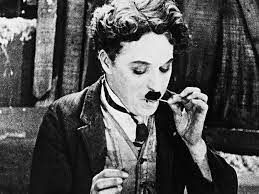Hello everyone, today I would like to pay homage to some of the most influential directors in history, who have revolutionized the world of cinema.
Alfred
Hitchcock: the master of thrills
Alfred Hitchcock was a 20th century British
director. In his career he directed over 50 films, the most famous being
“Psycho” made in 1960.
He is defined as the master of thrills as his
films are characterized by suspense created by tension and dark atmosphere and
by using the psychological elements.
The main plots are fear, the psyche, all the
hidden nuances of the human soul, in particular the darkest sides.
After the discovery of color films, Hitchcock
continued to make black and white films because he believed that black and
white films created more suspense and because they were much cheaper than color
films.
Hitchcock's fear of the police is reflected in
some of his films.
Hitchcock revolutionized the world of thriller
films and inspired many modern directors.
In his career Hitchcock won only 1 Oscar and 1 Golden Globe for best director.
Among Hitchcock's most iconic films we find:
●
The wrong man (1952)
●
Dial M for murder (1954)
●
Vertigo (1958)
●
Psycho (1960)
●
The birds (1962)
●
Torn Curtain (1966)
●
Topaz (1969)
●
Frenzy (1972)
●
Family plot (1976)
➢
In 1971 he was knighted by Queen
Elizabeth II
➢
In many films he appears as an
extra character
➢ The number 13 and the letter M which corresponds to the number 13 in the Latin alphabet) are his lucky charms and often appear in his films.
Charlie
Chaplin
Charlie Chaplin was born in London in 1889,
his parents were cinema artists and he was involved in the world of
entertainment from an early age. He participated in many films as an actor,
after become a revolutionary director
who changed silent cinema: thanks to his art in gestures and his skill in mime
he managed to involve spectators and convey great emotions.
His most iconic character was Tramp a clumsy
man with a heart of gold. He represented an ordinary man dealing with the
difficulties of life, but always optimistic.
In his films, Charlie Chaplin addresses important themes such as poverty and oppression, but also political satires such as in the film "The great dictator".
Among his most famous films we find:
●
The vagabond
●
A king in New York
●
Sir
●
The circus
●
The gold rush
●
City Lights (his first sound film)
●
The great dictator
Chaplin brought 3 very important technical innovations:
Depth of field to make his films more
realistic, creating more complex scenes;
The handheld camera which helped to give more
realism and the editing to create more humor.
●
In 1915 he took part, under a
false name, in a competition to find his double and came only third.
●
In 1978 his body was stolen and a
ransom was demanded from his wife. She refused to pay, claiming that her
husband would call it ridiculous.
●
Hitler loved the film King Kong in
which Charlie Chaplin starred, but hated his character after he made fun of him
in the film “the great Dictator”
Federico Fellini
He was an Italian director and cartoonist,
born in Rimini in 1920.
He started as a boy when he created cartoons
and caricatures for local newspapers.
He revolutionized the cinematographic language
with his unique and visionary style created by a mix of reality and dream and
irony and melancholy.
His debut came with the film:
●
Luci della varietà (1951)
Fellini won 4 Oscars for best foreign film
with:
●
8 ½
●
Le notti di Cabiria
●
Amarcord
● La strada
He won the gold palme at the Cannes Film
Festival with the film:
●
La dolce vita
He also won a Golden Lion for Lifetime Achievement
at the Film Festival of Venezia.
His films are characterized by an
autobiographical component and are often set in Rimini.
Fellini has particular attention to detail and
atmosphere.
Federico Fellini died on 31 October 1993, in
the following days the funeral home was set up in Studio 5 of Cinecittà, often
used for his film set.
●
Il film
"Toby Dammit" è tratto da un fumetto di Edgar Allan Poe.
●
Il film
"8½" è un suo autoritratto psicoanalitico.
●
La città di
Rimini gli ha dedicato un museo.
●
Ha diretto
alcuni spot pubblicitari per Barilla, Campari e Banca di Roma.
●
Era un grande
ammiratore di Charlie Chaplin e Stanley Kubrick.








Comments
Post a Comment